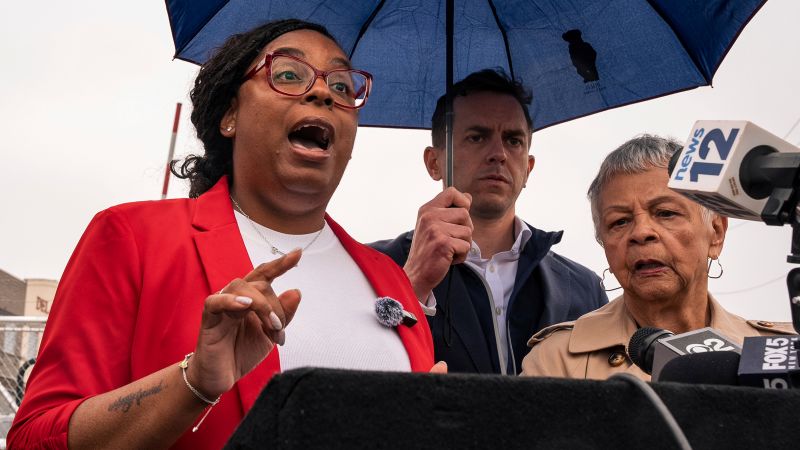In the current socio-political landscape of the United States, the experiences and perspectives of voters in critical regions provide a significant window into the impact of policies and the party dynamics that shape American electoral politics. One such voter is Todd Harder, a Trump supporter from Pennsylvania’s 7th Congressional District, an area emblematic of the shifting tides in American manufacturing. Harder’s support for Donald Trump stemmed from the belief that Trump’s promise of a manufacturing renaissance would revitalize his community and bolster economic prospects. However, over time, Harder has developed a deep skepticism regarding those promises, noting that instead of a manufacturing boom fueled by tariffs and strong trade rhetoric, his community is facing tangible economic challenges.
Harder, the owner of ProDart, which produces wooden darts and dartboards, expresses concern that while the slogans might inspire hope for future generations, his generation is not feeling the positive impacts promised by the Trump administration. With a current workforce of only five, reduced from its peak of fourteen employees, and a sense of impending financial strain in the community, Harder’s pessimism regarding Trump’s economic policies is profound. He articulates the anxiety many small business owners feel right now, highlighting issues like high rent and a conservative approach to spending among consumers, factors that are tempering what growth might be possible.
Harder’s voice is particularly important in the context of the broader political landscape, especially since the 7th District narrowly shifted from Democratic to Republican representation during the 2024 elections. This shift in power underscores the critical nature of Harder’s perspective as a bellwether voter, reflecting the sentiments of many in similar manufacturing jurisdictions experiencing the repercussions of global trade policies. He notes this shift as potentially pivotal in the upcoming 2026 midterms, where maintaining electoral momentum could be uncertain for Republicans.
The Lehigh Valley, where Harder lives, has a storied history of manufacturing, with iconic names like Bethlehem Steel and Mack Trucks contributing to its economic identity. However, the decline in manufacturing jobs over the years—from over 66,000 in 1990 to merely 41,000 by the end of 2024—illustrates the heavy toll that globalization and trade dynamics have taken on this region. With Trump in office yet witnessing no significant uptick in employment over his most recent term, the skepticism of voters like Harder becomes pivotal in understanding the administration’s support base.
Harder isn’t alone in his misgivings; other voters in the area are experiencing similar concerns. For instance, Gerard Babb, another Trump voter, has voiced fears about job security as Mack Trucks announced potential layoffs, citing the very tariffs that were supposed to stimulate the local economy. Additionally, Babb expresses ambivalence about future voting decisions, pointing out a lack of tangible results from Trump’s policies. This sentiment represents a broader trend among voters who are reevaluating their support as the realities of their economic situations contradict the promises made during past campaigns.
On the other side of the political divide, Michelle Rios embodies a contrasting experience as someone engaged in promoting diversity and inclusion in education. As a college program coordinator, Rios navigates the anxiety within her own community about immigration policies and potential impacts on funding for programs that support minorities. This anxiety reflects a broader cultural concern for many who feel marginalized by the narratives pushed by Trump and his allies.
The intersecting narratives of voters like Harder, Babb, and Rios reveal a complex tapestry of American political identity. It underscores how closely linked personal experiences are to national policies and political rhetoric. As the nation moves toward the crucial 2026 midterms, these stories serve as crucial reminders of the often unpredicted and diverse ways in which ordinary Americans are grappling with the political landscape forged by recent elections.
Ultimately, the participation of these voters is instrumental not just for the immediate electoral landscape but also in understanding the shifting priorities and sentiments across America’s heartland. It reflects a yearning for genuine economic prosperity over mere political posturing, showing how the intersection of local realities with national narratives will continue to shape electoral outcomes in the coming years.



